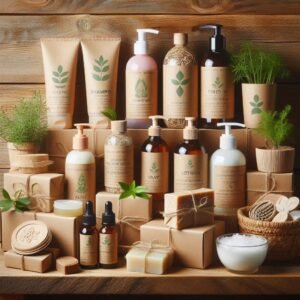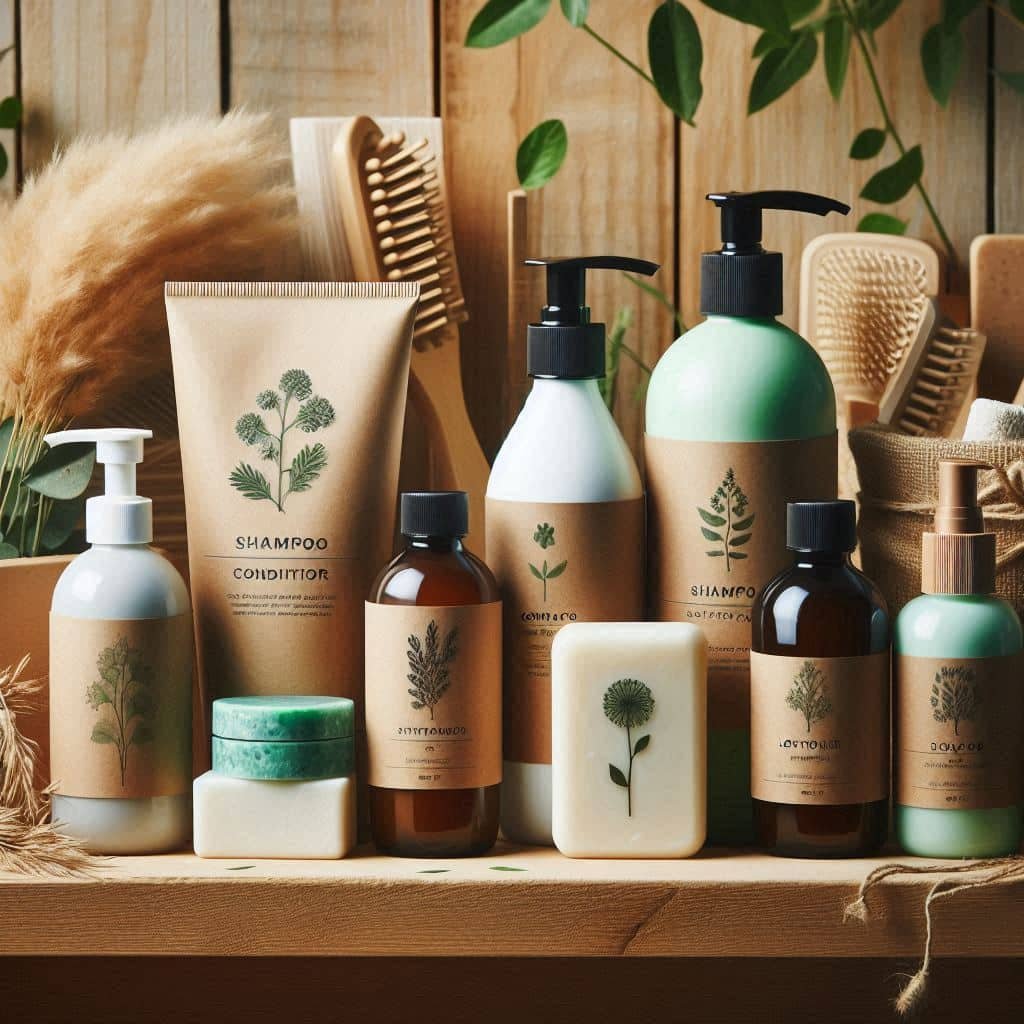In recent years, the demand for sustainable beauty products has skyrocketed. Consumers are increasingly concerned about the environmental impact of the cosmetics they use daily, driving brands to prioritize eco-friendly practices. Sustainable beauty focuses on minimizing the environmental and social impact while ensuring product safety and effectiveness. This article will explore the world of sustainable beauty, its benefits, challenges, and how consumers can make informed choices.
Understanding Sustainability in Beauty

What Makes a Product Sustainable?
A sustainable beauty product is designed to be eco-friendly across its entire lifecycle—from ingredient sourcing to manufacturing, packaging, and disposal. It avoids harmful chemicals, reduces waste, and uses renewable resources wherever possible.
Key Ingredients to Avoid in Non-Sustainable Products
Ingredients such as microplastics, parabens, and sulfates are commonly found in non-sustainable beauty products. These chemicals can harm both the environment and human health, contaminating water systems and disrupting marine life.
Certifications and Labels to Look For
Certifications like USDA Organic, Fair Trade, and the Leaping Bunny help consumers identify truly sustainable and cruelty-free products. These labels ensure that the product meets specific environmental and ethical standards.
Benefits of Using Sustainable Beauty Products
Environmental Benefits
By choosing sustainable beauty products, consumers can reduce pollution and lower their carbon footprint. Sustainable products often use biodegradable ingredients and eco-friendly packaging, which decomposes without harming the environment.
Health Benefits
Sustainable beauty products tend to be free from harsh chemicals, which can irritate the skin and cause long-term health problems. Natural ingredients, on the other hand, are gentler and safer for both skin and overall health.
Ethical and Social Benefits
Sustainable beauty often emphasizes fair-trade practices and cruelty-free manufacturing. Supporting such brands means advocating for better working conditions for farmers and factory workers, as well as animal welfare.
Sustainable Ingredients in Beauty Products
Common Sustainable Ingredients
Ingredients like aloe vera, coconut oil, shea butter, and jojoba oil are commonly used in sustainable beauty products. These ingredients are renewable, biodegradable, and often sourced from fair-trade cooperatives.
Importance of Natural vs. Synthetic Ingredients
While many people associate “natural” with “better,” some synthetic ingredients can be sustainably sourced and eco-friendly. The key is to balance safety, efficacy, and environmental impact when selecting ingredients.
Packaging Innovations in Sustainable Beauty
Reducing Plastic Use
One of the major sources of waste in the beauty industry is plastic packaging. Brands are now innovating by using glass, metal, and other recyclable materials to reduce plastic consumption.
Refillable and Reusable Packaging
Several companies are adopting refillable packaging models, where consumers can purchase refills rather than new containers. This reduces waste and encourages sustainable consumption.
Biodegradable and Compostable Options
Biodegradable packaging made from materials like bamboo, cornstarch, and recycled paper is gaining popularity. Such options decompose naturally, reducing the burden on landfills.
Eco-friendly Production Practices
Cruelty-free Manufacturing
Sustainable beauty brands are committed to cruelty-free practices, ensuring that no animals are harmed during product development. This is particularly important in regions where animal testing is still legal.
Energy-efficient Production Methods
Energy-efficient production methods, such as using renewable energy in manufacturing facilities, reduce the carbon footprint of beauty products.
Ethical Sourcing of Ingredients
Fair-Trade and Local Sourcing
Sourcing ingredients through fair-trade practices ensures that farmers are paid fairly for their work, while local sourcing reduces the carbon emissions associated with transporting materials over long distances.
Importance of Traceability
Traceability allows consumers to know exactly where the ingredients in their beauty products come from, ensuring ethical sourcing and sustainability throughout the supply chain.
Case Studies: Brands Leading in Sustainability
Case Study 1: REN
REN has become a leader in the sustainable beauty space by using 100% biodegradable packaging and sourcing all of its ingredients from renewable resources.
Case Study 2: Aveda
Aveda focuses on vegan and cruelty-free products. Their commitment to sustainability includes a refill program that reduces plastic waste by over 50% annually.
Challenges Facing the Sustainable Beauty Industry
Greenwashing
One of the biggest challenges is greenwashing, where brands make false or exaggerated claims about their sustainability efforts to attract eco-conscious consumers.
High Costs for Consumers
Sustainable products are often more expensive due to the higher costs associated with ethical sourcing and eco-friendly manufacturing practices.
Limited Availability of Sustainable Options
While demand for sustainable beauty products is growing, availability remains limited, especially in certain regions where eco-friendly brands are less accessible.
Consumer Demand and Trends in Sustainable Beauty
Growing Consumer Awareness
With increasing awareness about climate change and environmental degradation, consumers are demanding more transparency and sustainability from their favorite brands.
Trends like Zero-Waste and Vegan Beauty
The rise of zero-waste beauty and vegan products is driving innovation in the industry, pushing brands to adopt more sustainable practices and product offerings.
The Role of Technology in Sustainable Beauty
Innovations in Sustainable Beauty
Technology is enabling sustainable beauty innovation, from biodegradable materials to AI-powered ingredient selection, which helps brands create safer and more sustainable products.
Use of AI for Better Ingredient Selection
AI tools are helping brands identify the most sustainable and effective ingredients by analyzing vast amounts of data on ingredient performance, safety, and environmental impact.
Government Regulations and Policies
International Regulations on Sustainable Beauty
Countries are beginning to implement regulations that require beauty companies to adopt sustainable practices, including reducing plastic waste and ensuring ethical sourcing.
How Regulations Impact Brands
While government regulations promote sustainability, they can also create challenges for brands, especially smaller ones, who may struggle to comply with new requirements.
Future of Sustainable Beauty Products
Emerging Sustainable Ingredients
Researchers are constantly discovering new sustainable ingredients, such as algae and lab-grown botanicals, that can be used in beauty products without harming the environment.
Advances in Sustainable Packaging
Packaging innovations, such as edible or dissolvable packaging, could revolutionize the way beauty products are sold and consumed, further reducing waste.
Practical Tips for Choosing Sustainable Beauty Products
How to Read Labels
Consumers should look for key phrases such as “organic,” “fair trade,” and “cruelty-free” on product labels to ensure they are making sustainable choices.
Trusted Sustainable Beauty Certifications
Certifications like EcoCert and the Vegan Society provide assurance that products meet high sustainability standards.
Read also How to Enhance Your Beauty with Makeup for Mature Skin
Conclusion
The shift towards sustainable beauty is more than a trend—it’s a necessary evolution for the health of our planet and our bodies. By choosing eco-friendly products, consumers can support ethical practices and reduce their environmental impact. Let’s make sustainable beauty the standard for future generations!
